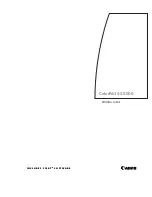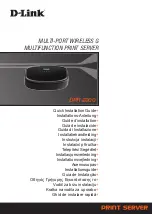
S o n o m a U s e r M a n u a l
2
C H A P T E R O N E
3
S o n o m a U s e r M a n u a l
CDMA Timing -
How It Works
The CDMA Subsystem in the Sonoma receives transmissions from base stations, also known as cell
sites, that are operating in compliance with the TIA/EIA IS-95 standard for Code Division Multiple
Access (CDMA) mobile telecommunications. This system requires a means of synchronizing the
base stations throughout the network so that neighboring cells do not interfere with each other and so
that calls can be efficiently transferred between the base stations, without interruption, as the mobile
user traverses the cell coverage areas. This ‘soft hand-off’ feature means that the mobile telephone
must be able to ‘hitlessly’ drop one base station and pick up the next one. To do this, the telephone
must be able to calculate the relative difference in time between the codes that modulate the signals
from each of the base stations, which again, requires that the base stations be synchronized.
The system designers chose the Global Positioning System (GPS), which is itself a CDMA-based
system, as the means of maintaining synchronization, and they defined
system time
to be
GPS time
.
Each base station throughout the system contains one or more high-performance GPS timing receiv-
ers with sophisticated algorithms that control either an extremely stable ovenized quartz crystal oscil-
lator or a Rubidium vapor atomic frequency standard. Such elaborate means are needed to meet the
very difficult operating specifications required by the TIA/EIA IS-95 standard. The base station time
synchronization must remain within 10 microseconds of GPS time over periods as long as twenty-
four hours during which GPS satellite signals might not be available (typically due to antenna/cable
failure, damage or vandalism) and in an environment where large ambient temperature swings may
occur. Equipment capable of meeting these requirements is at the current state-of-the-art.
The CDMA Subsystem in the Sonoma receives the same initialization signals transmitted by the base
stations that are used by the mobile telephones to establish their synchronization to system time. The
mobile telephones cannot communicate in the system until they have established synchronization
with the received spread spectrum encoded waveform. Unlike the mobile telephones, once this syn-
chronization has occurred, the CDMA Subsystem has all of the information that it needs to perform
its function of delivering accurate UTC time to a network of computers. The mobile telephone must
decode much more information, establish two-way communications with the base station, and be a
paid subscriber to performs its function of placing and receiving calls.
All of this means that during normal operation, the quality of the timing information being trans-
mitted from each of the base stations is virtually a repeat of that directly obtainable from the GPS.
The big difference is that the received signal strengths from the base stations are a minimum of 30
dB larger than those from the GPS satellites, which is why you can usually talk on your cell phone
indoors. Due to the nature of the IS-95 spread spectrum CDMA modulation scheme, this timing in-
formation may be extracted by a well-designed receiver with a precision of a few nanoseconds. The
CDMA Subsystem in the Sonoma does just that, and for this reason, we call our technology ‘indirect
GPS’.
Summary of Contents for Sonoma D12
Page 2: ......
Page 20: ...S o n o m a U s e r M a n u a l 4 C H A P T E R O N E This page intentionally left blank...
Page 32: ...S o n o m a U s e r M a n u a l 16 C H A P T E R T W O This page intentionally left blank...
Page 48: ...S o n o m a U s e r M a n u a l 32 C H A P T E R T H R E E This page intentionally left blank...
Page 70: ...S o n o m a U s e r M a n u a l 54 C H A P T E R S I X This page intentionally left blank...
Page 82: ...S o n o m a U s e r M a n u a l 66 C H A P T E R S E V E N This page intentionally left blank...
Page 104: ...S o n o m a U s e r M a n u a l 88 C H A P T E R N I N E This page intentionally left blank...
Page 128: ...S o n o m a U s e r M a n u a l 112 A P P E N D I X A This page intentionally left blank...
Page 138: ...S o n o m a U s e r M a n u a l 122 A P P E N D I X B This page intentionally left blank...
Page 160: ...S o n o m a U s e r M a n u a l 144 A P P E N D I X G This page intentionally left blank...
Page 166: ...S o n o m a U s e r M a n u a l 150 A P P E N D I X H...
Page 167: ...151 S o n o m a U s e r M a n u a l S P E C I F I C AT I O N S...
Page 168: ...S o n o m a U s e r M a n u a l 152 A P P E N D I X H This page intentionally left blank...
Page 171: ......
















































